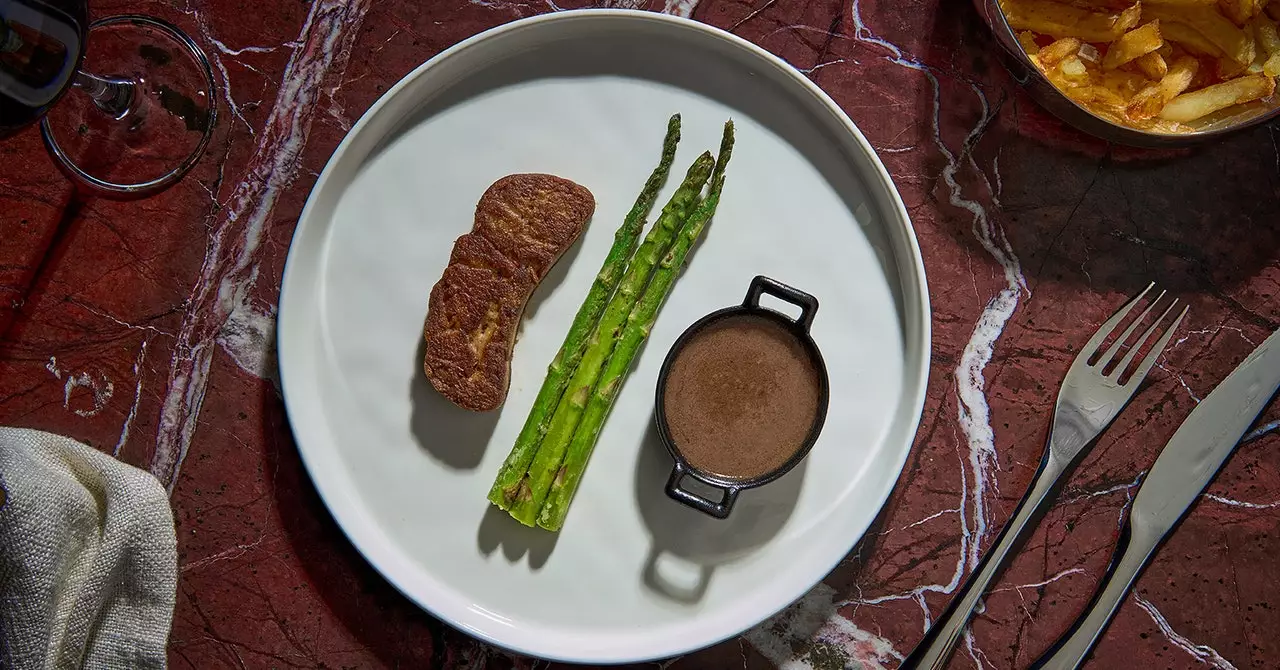Recently, an upscale sushi bar in New York served as a vibrant backdrop for an event that intertwined high cuisine with groundbreaking science. Guests enjoyed an eclectic menu, featuring sushi rolls, peking duck tapas, and mushroom salad—all uniting under a singular, avant-garde ingredient: foie gras cultivated from quail cells within a bioreactor. The event, under the expert guidance of renowned sushi chef Masa Takayama, was a celebratory launch for Vow, an Australian company pioneering the field of cultivated meat. With its initial offerings poised for debut in elite restaurants across Singapore and Hong Kong, Vow is tapping into the allure of indulgence, presenting cultivated meat as synonymous with luxury.
In a landscape typically dominated by ethical concerns about animal welfare, Vow’s strategy diverges significantly. Instead of marketing its products solely as environmentally friendly alternatives to traditional meat—an approach characteristic of many in the cultivated meat sector—CEO George Peppou is appealing to a more affluent consumer base. He emphasizes the extravagant nature of this new product line, showcasing not just a meal but a luxury experience replete with black truffles and other gourmet delights.
While the intent behind cultivated meat often leans toward addressing moral dilemmas surrounding modern agriculture, Vow’s audacious positioning raises critical questions about sustainability versus extravagance. Currently, the cultivated meat industry wrestles with its most significant obstacle: cost. Despite progress made by startups, producing lab-grown meat remains prohibitively expensive, with estimates suggesting a price range of $10,000 to $68 per pound as of 2021, largely depending on techniques employed.
Peppou argues that their approach is a necessary evolution, stating that luxury pricing might provide not just initial viability but also serve as a springboard to wider adoption. However, the tension between luxury and mass production looms large. The standard price for factory-farmed chicken hovers around $2.67 per pound, a stark contrast to the exorbitant costs associated with lab-grown alternatives. This discrepancy underlines the challenge of profitability, with many cultivated meat stakeholders scrambling to find an economic equilibrium.
Peppou remains undeterred by skepticism regarding cultivated meat’s future, asserting that public perception and industry viability are fluid concepts. He articulates a vision where cultivated meat can transcend conventional boundaries, suggesting that limitations perceived by others are merely hurdles to be navigated. This bold forecast is reflective of an overarching trend in the cultivated meat space—an industry rife with ambition but often stymied by financial realities.
The cultivation of animal cells, primarily a domain for medical researchers and pharmaceutical companies focused on small-scale, high-stakes products, contrasts sharply with the scale required by cultivated meat producers. While pharmaceuticals thrive on the development of vaccines and medicines that fetch premium prices, cultivated meat requires a paradigm shift. The necessity for large-scale production at prices competitive with conventional meat presents a considerable challenge that continues to confound many innovators.
The landscape for cultivated meat may be marked by challenges, but it is also rife with potential. As companies like Vow navigate the delicate balance between luxury and accessibility, there is hope that breakthroughs in biotechnology could eventually yield a solution. Enhanced production methods and a broader acceptance of cultivated products might pave the way for reduced costs and increased market reach.
In an age increasingly defined by ethical consumption and sustainability, the quest for cultivated meat to secure its place at the dining table is not just about gourmet experience but about redefining culinary traditions. As more restaurants begin to embrace innovative ingredients, the future of cultivated meat could evolve from an exclusive luxury to a common feature, reshaping not just what we eat, but how we perceive our relationship with food itself. In this way, the cultivated meat sector stands at a pivotal junction, charged with the responsibility and the promise of revolutionizing a dining experience for generations to come.

